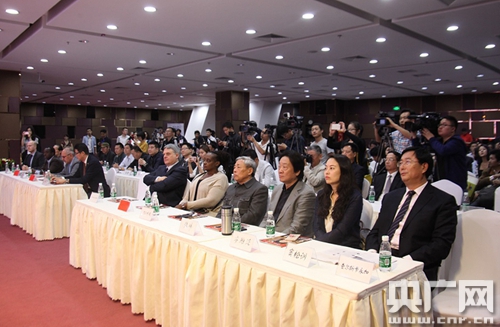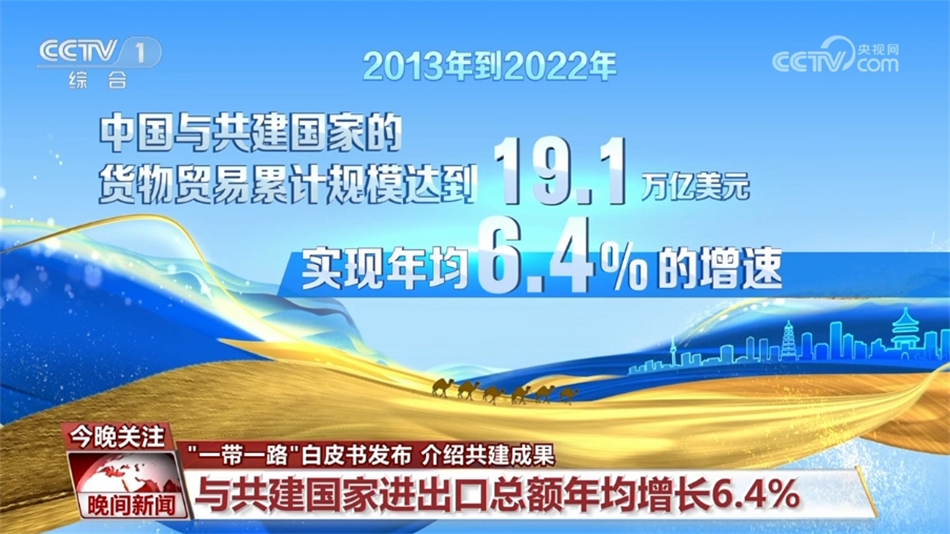The Silk Road Is More Than Just A Business Road: What Did Those Civilizational "express Delivery" That Spanned Thousands Of Years Change The World?
The Silk Road Is More Than Just A Business Road: What Did Those Civilizational "express Delivery" That Spanned Thousands Of Years Change The World?
When people think of the Silk Road, they often think of camel caravans loaded with silk and porcelain, or merchant ships plying the South China Sea. But this passage that stretches for thousands of years has long surpassed the single attribute of "business road". It is more like a flowing civilization "express line"
When people think of the Silk Road, they often think of camel caravans loaded with silk and porcelain, or merchant ships plying the South China Sea. But this passage that stretches for thousands of years has long surpassed the single attribute of "business road". It is more like a flowing "express line" of civilization, packaging and delivering ideas, technology, art and lifestyles from the East and the West. In the collision and integration, it has quietly rewritten the development trajectory of the world.
Technology “Express Delivery”: Leverage to Advance Civilization
China’s four great inventions are the most influential “technological packages” on the Silk Road. Papermaking first spread to Central Asia along the overland Silk Road, and then to Europe via the Arab region. Before that, Europeans wrote on parchment, which was expensive and bulky. One Bible required hundreds of parchments. The popularization of papermaking greatly reduced the cost of knowledge carriers and provided a material basis for the Renaissance and the Reformation. Without convenient paper, Dante's "Divine Comedy" and Copernicus' "On the Revolutions of the Celestial Spheres" would have been difficult to spread widely, and the emergence of modern science might have been delayed by decades.
The spread of gunpowder and the compass to the west reshaped the world. After gunpowder was introduced to Europe by the Arabs, it gradually changed the pattern of warfare in the Middle Ages: castles were no longer indestructible, the knight class declined, and the unification process of nation-states was accelerated by new weapons. The compass entered Europe through the Maritime Silk Road and became the "navigation key" for opening up new shipping routes. Columbus's discovery of America and Vasco da Gama's arrival in India were all aided by the compass. It allowed mankind to break through regional limitations and ushered in globalization.
Western technology was also imported into China along the Silk Road. The knowledge of astronomy and mathematics from ancient Greece was introduced to the Central Plains via Persia and India. In the Nine Chapters of Arithmetic during the Eastern Han Dynasty, there are traces of learning from Western arithmetic. The iron smelting technology and water conservancy engineering technology of Central Asia helped China improve its agricultural and military productivity during the Qin and Han Dynasties. This two-way technological "express delivery" has brought Eastern and Western civilizations closer to the starting line.
Cultural "Express": Breaking the Wall of Barriers Between Civilizations
Religion is the most widely spread "cultural package" along the Silk Road. Indian Buddhism spread eastward along the overland Silk Road and entered China during the Eastern Han Dynasty. After integrating with Confucianism and Taoism, Buddhism gradually became Chinese and derived branches such as Zen Buddhism and Pure Land Buddhism. In the Dunhuang Mogao Grottoes, there are both Indian Gandhara-style Buddha statues and traditional Chinese painting techniques. The flying images of the Yungang Grottoes have gradually evolved from the early Western style to the Chinese-style flying apsaras with a light body. The introduction of Buddhism not only enriched China's religious beliefs, but also profoundly influenced philosophy, literature and art - Wang Wei's poem "Zen in Poetry" and Su Shi's "Life is like a dream" all reveal the shadow of Buddhist thought.

The Silk Road camel team carries musical instruments, and civilization blends in the desert.
Islam spread through the land and maritime Silk Roads and was introduced to China in the Tang Dynasty. Arab businessmen established mosques in Guangzhou and Quanzhou, combining Islamic culture with local folk customs to form a unique Hui culture. Nestorian Christianity (Nestorian Christianity) also entered the Central Plains along the Silk Road. During the Taizong period of the Tang Dynasty, a "Persian Temple" was established for them to preach. The Nestorian Monument of the Great Qin Dynasty recorded its spread in China and became a precious witness to religious exchanges between the East and the West.
The "express delivery" of art is equally wonderful. Music, dance and musical instruments from the Western Regions, such as pipa, suona and Huxuan dance, were popular in Chang'an during the Tang Dynasty. The "Song of Colorful Feather Clothes" created by Emperor Xuanzong of the Tang Dynasty incorporates elements of music from the Western Regions; the "Bounce Pipa" in the Dunhuang murals reproduces the agility of Hu Wu. Chinese painting and calligraphy have also influenced Central and East Asia - the calligraphy style of the Korean Peninsula imitates Wang Xizhi's brushwork, and the shadow of Chinese gongbi painting can be seen in Japanese Ukiyo-e. This kind of artistic collision makes the world's culture more diverse.

Dunhuang dancers accompany the camel team, Silk Road products and art.
Life "Express": Reshaping the daily picture of human beings
The Silk Road also changed the way of life of Eastern and Western people, packaging products and customs from various places for delivery. Chinese tea was introduced to Central Asia and Europe via the Silk Road. After the 17th century, it became a fashionable drink for European aristocrats, and then evolved into a daily drink popular around the world. Silk was not only a luxury product sought after by Roman aristocrats, but also promoted the development of the Western textile industry. The Byzantine Empire imitated Chinese silk craftsmanship and produced silk fabrics with local styles.
Western products have also profoundly changed Chinese life. Grapes, alfalfa, and carrots from Central Asia, and pomegranates and spinach from West Asia were introduced to the Central Plains via the Silk Road, enriching China's crop varieties and promoting agricultural development. Arabian spices and European glassware became life embellishments of the nobles in the Tang Dynasty. The introduction of glass manufacturing technology added new elements to China's porcelain craftsmanship.

Blue and white porcelain meets bronze, a cultural gathering of Silk Road tents.
Even food customs were intertwined along the Silk Road. Xinjiang’s grilled naan and mutton pilaf are products of a combination of Persian food and local ingredients; Yunnan’s Pu’er tea is exported to Tibet through the Ancient Tea Horse Road (Silk Road branch), forming a unique tea culture. These seemingly daily details of life are actually the traces left by civilized "express delivery".
Millennium Echo: Eternal Enlightenment of the Blending of Civilizations
The civilizational "express delivery" of the Silk Road has never been interrupted by the rise and fall of trade routes. It proves that different civilizations are not isolated islands, but nourish each other and grow together through exchanges. China's four great inventions have promoted the modernization process of the world, and Western science and technology and culture have enriched the connotation of Chinese civilization. This two-way gift has made the starry sky of human civilization even brighter.
Today, the "Belt and Road" initiative inherits the civilizational "express delivery" spirit of the Silk Road, packaging and delivering modern technologies such as high-speed rail and 5G, as well as cooperation in culture, education and other fields. This may be the ultimate revelation that the Silk Road left to the world: the progress of civilization is never the result of closed doors, but the result of openness, inclusiveness, and mutual learning. Those "express delivery" that spanned thousands of years not only changed the past, but also guided the future.





